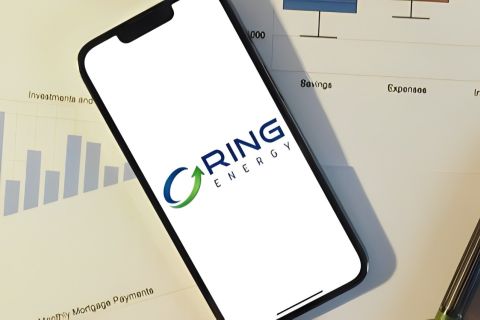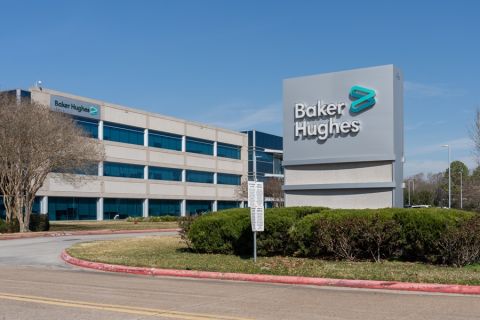Nissa Darbonne, executive editor-at-large, Hart Energy: Hi, thanks for joining us. I'm Nissa Darbonne, executive editor-at-large for Hart Energy, and we're visiting with Blake McKenna. Blake is president and chief operating officer for XCL Resources, leading Uinta Basin operator.
Blake, first thank you for joining us and thank you for just presenting in SUPER DUG 2024 here in Fort Worth. Appreciate it.
Blake McKenna, president and COO, XCL Resources: I appreciate it, Nissa. Thank you so much for hosting us.
ND: You are looking to buy a neighbor operator Altamont [Energy].
BM: Correct.
ND: Altamont in the Uinta Basin, but because of this Federal Trade Commission arrangement from a couple years ago, you have to actually ask the Federal Trade Commission to buy a neighbor in the Uinta Basin.
BM: That is correct.
RELATED
Uinta Basin's XCL Seeks FTC OK to Buy Altamont Energy
Utah’s Ute Tribe Demands FTC Allow XCL-Altamont Deal
ND: Tell me where are we on getting that deal closed?
BM: Yeah, so the way it works, it's called the prior approval process, and you're starting to see a lot more of that with the Federal Trade Commission and some of their current agenda of where they're trying to push a little bit more of their reach into anti-competitive acts. So part of that prior approval process, if we want to buy an operator, we go in, we submit our bid, and then we let the FTC know that, “Hey, we want to purchase this. We'd like for you to approve it. This is what it looks like.” They ask their questions a little bit of back and forth, and then we have to wait for their prior approval. And so we're kind of in that waiting process right now. We've given all the data they need. They've asked a bunch of good questions back and forth, so now we just wait. So we're hoping to hear back on that and hopefully have that tied up into the summer.
ND: I actually inquired with someone who works with the FTC a good bit as to, do they have a deadline to respond? Is there a deadline?
BM: So within that agreement, there is no deadline. However, the Federal Trade Commission needs to be careful not to get in the way of just the normal flow of business. So we anticipate that we will hear back from them, but that is true: There is no deadline on the prior approval process.
ND: Okay. Also too, no matter that you weren't able to pick up the EP Energy assets in the Uinta Basin two years ago, you've doubled production, I think, out of the Uinta.
BM: Yeah, that is correct. When we were unable to close that EP transaction, which now rests in the hands of another operator, we just went full in focus on our asset only, and we've taken our production—I think when we purchased the asset, it was a little under 10,000 barrels a day, and then we're pushing 60,000 barrels a day right now. So we just focused all of our efforts on that asset that we retained and we've been able to pump production up.
ND: How have you been able to do that?
BM: Careful planning and taking risks? I would say those are the two things. We feel comfortable taking risks if we understand what sits behind that and if we can prepare ahead of it. So if we can go say, all right, we're going to go make sure that we've got the refineries to sell to in Oklahoma, Wyoming, the Gulf Coast, all of our takeaway points and refining points. We make sure that we have the right agreements in place to go after it. So in order to take that risk, we've got to be comfortable with the underlying operations and marketing and infrastructure that needs to go in place. And so that's what we did.
We talked in our presentation a little bit earlier of building the ramp to that production, and we really spent two full years preparing the asset for this volume and testing completion designs, testing spacing, building our infrastructure, making marketing agreements, starting to add more rail takeaway capacity with some of our takeaway partners so that when it came time to drill and frac and get these wells online, we were ready for it, and we've been able to execute on that. So a lot of planning.
ND: One of your neighbors there in the Uinta Basin has been reporting that by doubling the proppant load in its wells, it is seeing 60% greater production. Are you affecting your own completion recipe?
BM: Yeah, so when it comes to completions, we did a really big spacing test. So at XCL, we're big believers in bookends, right? Let's go test it small, let's go test it huge, and we'll go to both sides and then we'll kind of see where we should end up. So about two years ago, we turned on some wells, the shake-and-bake wells, where we tested very large fracs, 3,000 pounds per foot, down to small fracs, 1,800 pounds per foot, to kind of see where we lie.
And that helped us settle more in the middle. So we're like 2,200 to 2,400. Some of the offset operators have historically done smaller completions, 1,000 to 1,500 pounds per foot, and they're starting to really push their completions up to the 2,000- and 2,500-pound-per-foot range and about equivalent gallons per foot.
And so we do believe there's a frac that's so big, it's not worth the extra money. And so we've been pretty happy in kind of that 2,000- to 2,500-pound-per-foot range.
RELATED
Crescent Energy: Bigger Uinta Frac Now Making 60% More Boe
ND: And I suppose you probably have, what, 12, 24 months of data now from these wells?
BM: Yeah, we're almost two years of data on them. We're about 20 months of data right now and you see it in the pressures pretty early. I think what we found with spacing, with a new frac design, in six to nine months you've got a pretty good picture.
When we used to operate the the Bakken in a previous life, it'd take you 12 to 18 months to really understand how these wells are interacting. But in the Uinta, because the pressure profile is so great, you understand where you are in six to nine months. So it's helped us actually make that evolution faster here in the Uinta because then we can update spacing, we can change frac design quickly.
ND: Then also too, I mean a lot of people are—one thing they know about the Uinta Basin is the crude is waxy, but where you are, tell us about the nature of the wax.
BM: Yeah, so the Uinta Basin as a whole is all going to be what's called this waxy crude. And despite some of its wax properties, it's pretty much a standard crude, but it's low sulfur, low contaminants. And really where the crude changes is not really anywhere within the basin east, west, north, south; it's really a vertical change. And so you'll have a darker, more black crude up high in lower TVDs, kind of like your Garden Gulch and your Douglas Creek formation. And then as you head down into the Uteland Butte Wasatch and then down into the Flagstaff formations, it becomes almost this bright yellow.
Now, the crude [gravity] itself doesn't vary much across color, and it's all going to be 36 to 42 API gravity oil. It's all going to be low-sulfur. The refineries will run it separately, but a lot of it gets blended, and the refineries on the Gulf Coast don't really care. So it really behaves the same no matter where you are within the oil window of the basin.
ND: Oh, and I did want to get in there real quick: What [has XCL] found to be the perfect lateral length?
BM: I would say for our core wells, we're aiming for two-mile laterals. Part of it is just the ease of spacing, how they're set up, and just how prolific the wells are. It makes sense. And then for some of our northern acreage, we're moving more to three-mile laterals, or as we get into the upper zones, we're going to look at respacing the three-mile lateral. So I think depending on the formation, however pressured it is, and the quality of the well, it'll be either two- or three-mile laterals.
ND: Wonderful. Thank you very much.
BM: Yeah, Nissa, I really appreciate your time. Thank you. Thanks.
ND: And thank you for joining us. Find more actionable intelligence right here at HartEnergy.com.
Recommended Reading
1Q24 Dividends Declared in the Week of April 29
2024-05-03 - With earnings season in full swing, upstream and midstream companies are declaring quarterly dividends. Here is a selection of dividends announced in the past week.
Vision RNG Expands Leadership Team
2024-05-01 - Vision RNG named Adam Beck as vice president of project execution, Doug Prechter as vice president of finance and Beckie Dille as HR manager.
Two Ring Management Leaders Exit, Replacement Search Underway
2024-06-24 - Ring Energy is updating its management team following the departure of two senior executives.
Equitrans Midstream Announces Quarterly Dividends
2024-04-23 - Equitrans' dividends will be paid on May 15 to all applicable ETRN shareholders of record at the close of business on May 7.
Baker Hughes Awarded Saudi Pipeline Technology Contract
2024-04-23 - Baker Hughes will supply centrifugal compressors for Saudi Arabia’s new pipeline system, which aims to increase gas distribution across the kingdom and reduce carbon emissions






